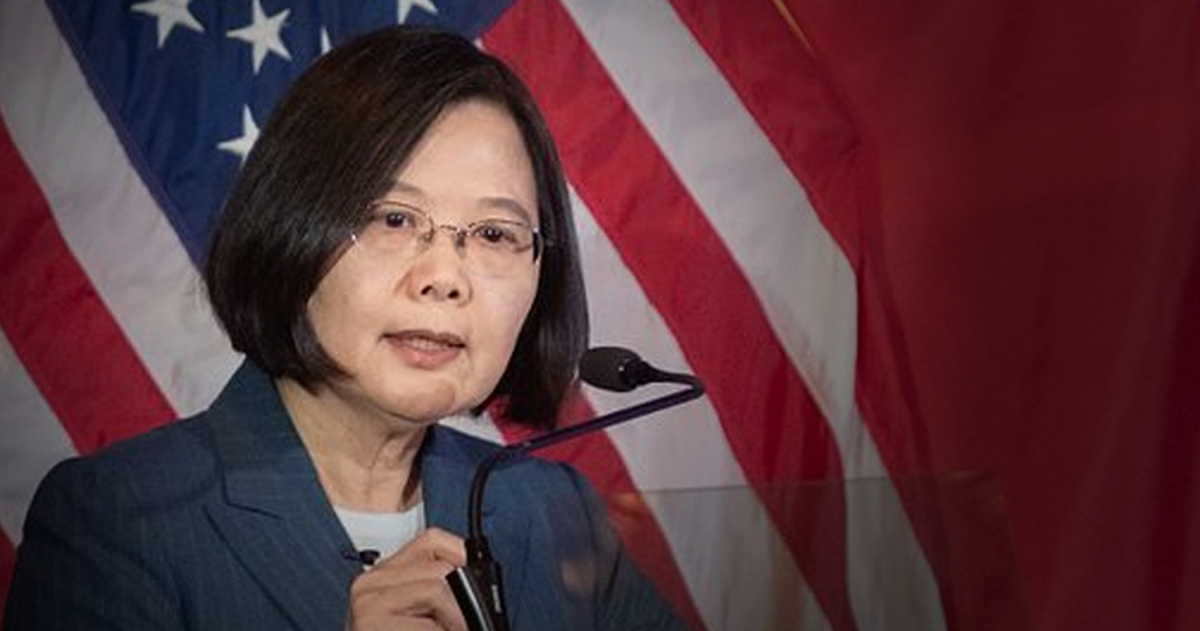Available in: Español | English
On 5 April, Taiwanese leader Tsai Ing-wen met with the Speaker of the US House of Representatives Kevin McCarthy, amid her controversial visit to the United States. McCarthy is the highest-ranking official to meet with a Taiwanese leader on US soil since 1979, when the United States and China re-established diplomatic relations. The closed-door meeting took place just months after former US House Speaker Nancy Pelosi visited the island in August 2022 and was held despite repeated objections and warnings lodged by the Chinese government. This is the latest in a series of serious provocations undertaken by Washington towards Beijing, intended to promote the notion that Taiwan is a separate and independent country from China, which have escalated bilateral tensions to unprecedented levels.
Tsai’s visit to the United States – part of a diplomatic tour which included stops in two Central American nations, Guatemala and Belize – took place in response to declining international support for the cause of Taiwanese separatism. On 25 March, just one week prior to Tsai’s trip, Honduras announced that it had severed diplomatic relations with Taiwan and re-established relations with Beijing, stating that ‘Taiwan is an inalienable part of Chinese territory’. The decision of Honduras is part of a broader trend: Taiwan has lost 19 diplomatic allies since 2000, including nine since Tsai came into office in 2016. Today, 181 of the 193 UN member states have formally adopted the ‘One China’ principle – recognising that Taiwan and the mainland are part of the same country, with sovereignty residing in Beijing; only 12 UN member states maintain official ties with the island, nearly all of them small nations under Washington’s strong influence.
The separatist politics of Tsai and her Democratic Progressive Party (DPP) are not only facing challenges globally but on the island itself. As the Financial Times recently put it, there is a ‘deepening political divide in Taiwan’ over how to manage cross-strait relations. In November 2022, the DPP suffered a major defeat in local elections to the opposition Kuomintang (KMT), which favours better relations with the mainland. At the same time as Tsai’s visit to the United States, former Taiwanese leader and Tsai’s predecessor, Ma Ying-Jeou undertook a historic 12-day visit to the mainland. Ma’s trip marked the first time that a former or current leader of Taiwan travelled to the mainland since 1949. ‘I sincerely hope that the two sides of the [Taiwan] Straits will work together to pursue peace, avoid war and revitalise the Chinese nation’, Ma stated during his trip. ‘This is an unavoidable responsibility of the Chinese people on both sides of the Straits, and we must work hard to realise it’.
Although Taiwanese ‘independence’ is often represented as an infallible cause by the United States and Western countries, it is clear that this is not the case on the island or the international stage. Even among Washington’s allies, there are divisions. On 9 April, after concluding a three-day state visit to China, French President Emmanuel Macron stated in an interview that Europe must avoid being ‘America’s followers’ or ‘tak[ing] our cue from the U.S. agenda’ regarding the question of Taiwan. ‘[I]s it in our interest to accelerate [a crisis] on Taiwan? No’, he added.
Beijing has made it clear to Washington the seriousness that it places on the issue. At an in-person meeting in November 2022, Chinese President Xi Jinping told US President Joe Biden: ‘the Taiwan question is at the very core of China’s core interests, the bedrock of the political foundation of China-US relations, and the first red line that must not be crossed’. Nonetheless, the United States is intent on using Taiwan – located just 160 kilometres off the south-eastern coast of the Chinese mainland – as a foothold to exert pressure on China. Even though Washington has formally adopted a One China policy, it maintains extensive ‘unofficial’ relations and military ties with Taiwan, through weapons sales, military training, stationing advisors and personnel on the island, and repeatedly sailing warships through the narrow Taiwan Strait that separates the island from the mainland. In December 2022, the US pledged an additional $10 billion in military aid to Taiwan.
Upon his return to Taiwan after his visit to the mainland, Ma Ying-Jeou stated that the actions of the DPP administration of Tsai Ing-Wen – and, by extension, its backers in Washington – ‘have continued to put Taiwan’s future in jeopardy’ and that the island must ‘choose between peace and war for our future’. Indeed, the interference of the United States only serves to increase global tensions and advance the narrow interests of Washington, it offers nothing to Taiwan, the mainland, or the international community. As progressive forces in Taiwan have declared, ‘to maintain peace in the Taiwan Strait and avoid the scourge of war, it is necessary to stop US interference’.
